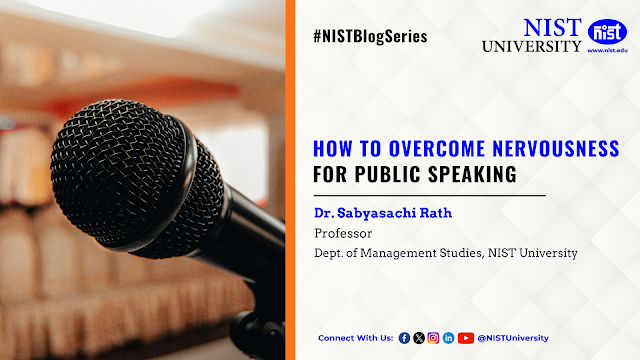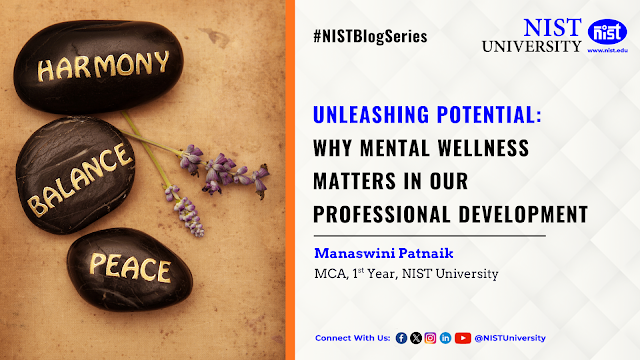HOW TO OVERCOME NERVOUSNESS FOR PUBLIC SPEAKING
Is the mere thought of getting up and speaking in front of other people making you feel nervous?
Just imagining the situation where all your classmates are watching you while you struggle to get through your presentation is enough to get your heart pounding and palms sweating. Don’t worry, you’re not alone. The phobia of public speaking is also called gloss phobia. Some of the signs of gloss phobia can include:
- Dry mouth
- Perspiration
- Nausea
- Shaky hands
- Heart palpitations
- Increased heart rate and blood pressure, and
- Intense anxiety and panic.
How to cope with nerves before the presentation?
Let me share some tips on how to better prepare for a presentation and ways to decrease stress and manage anxiety long-term.
Step 1:
Reinforce your knowledge The first step towards an anxiety-free presentation is to be prepared. Make sure that you completely understand the topic you’re covering by researching as much as possible. Also, try to think about questions that people could potentially have for you. This way, you will be ready to answer any questions that may arise.
Step 2:
Organize your presentation Another important step in preparing for a presentation is to be organized. Make sure to prepare a good slide presentation, with points that you can elaborate on freely. Organize it into distinct sections and memorize the sequence of your talking points to always know what’s next. Also, think about the technical details. Get to know your surroundings and the equipment you’ll be using to avoid any mishaps. If you’re doing a presentation online, clear your desk of any clutter, and remove any distractions. Taking care of these details will reduce your anxiety and make your presentation flow smoothly.
Step 3:
Practice your presentation Another way to decrease nervousness is to practice your presentation beforehand. Go over your presentation fully, as if you’re already in front of an audience. Imagine the audience in front of you and talk as if they’re there. Although it may feel awkward at first, it will help you feel more comfortable when the day of the presentation comes. You can stand in front of a mirror to observe your body language and make corrections if needed. If you’re doing a presentation over a video call, another great tip is to turn on your camera app and practice your presentation this way. Picturing your audience in front of you while you practice will help you visualize the atmosphere and get you used to the feeling of presenting. Practicing will also help you locate the weak points of your presentation and correct them.
Step 4:
Breathe/meditate Breathing exercises and meditation are habits you can implement in your everyday life as a stress relief tool. Meditation has been proven to decrease stress and anxiety levels, as well as help with other mental health issues. Meditation is an amazing tool to have as a part of your everyday life. However, if you don’t feel like meditating is for you, you can get some of the benefits from meditation practices such as breathing exercises. You can do some breathing exercises right before your presentation to calm your nerves and clear your head.
Step 5:
Turn nervousness into excitement Another way to ease nervousness is to rewire your brain to interpret nervousness as excitement. One way to do this is to learn to differentiate between good and bad anxiety. Anxiety is there for a good reason — sometimes you need to listen to your gut to get out of a bad situation. However, if you’re anxious about a presentation at work, you can turn this anxiety into excitement. For example, you have a big presentation at work tomorrow and your brain is running at full speed with thoughts such as: “I’m so nervous, I’m totally going to mess this up. Everyone is just waiting for me to make a mistake”. This is the moment you can take control and rephrase your inner thoughts to a positive stance such as: “I’m excited to show everyone what I’ve been working so hard on. I’ll use all of this energy to deliver a great presentation and my classmates will be stoked to learn something new”. This kind of positive thinking goes a long way to make you feel better about yourself. If you keep this up for a long time, eventually you will rewire your brain to instantly interpret anxiety as excitement.
Step 6:
Accept fear We all experience fear, and we can all choose how we will deal with it. Rather than trying to fight your fear of public speaking, try accepting it. Fear is a normal part of life, and while it’s not always comfortable, it can serve as motivation rather than intimidation. Fighting your fear or denying it altogether will only make it worse. Instead of saying “I’m scared, and I can’t do this”, try telling yourself: “I’m scared, and I’m doing it what soever”. You can be scared and still do it.
Step 7:
Avoid coffee A practical tip for all the nervous people out there — avoid caffeine. Caffeine is a stimulant, which means it increases your alertness and energy. However, that also means you can get side effects such as:
- Restlessness and shakiness
- Fast heartbeat
- Nervousness and
- Trouble sleeping.
You can see why nerves and caffeine don’t go well together, so avoid coffee before your presentation. If you generally suffer from anxiety, you should try ditching caffeine altogether, as this can positively impact your anxiety levels.




Comments
Post a Comment